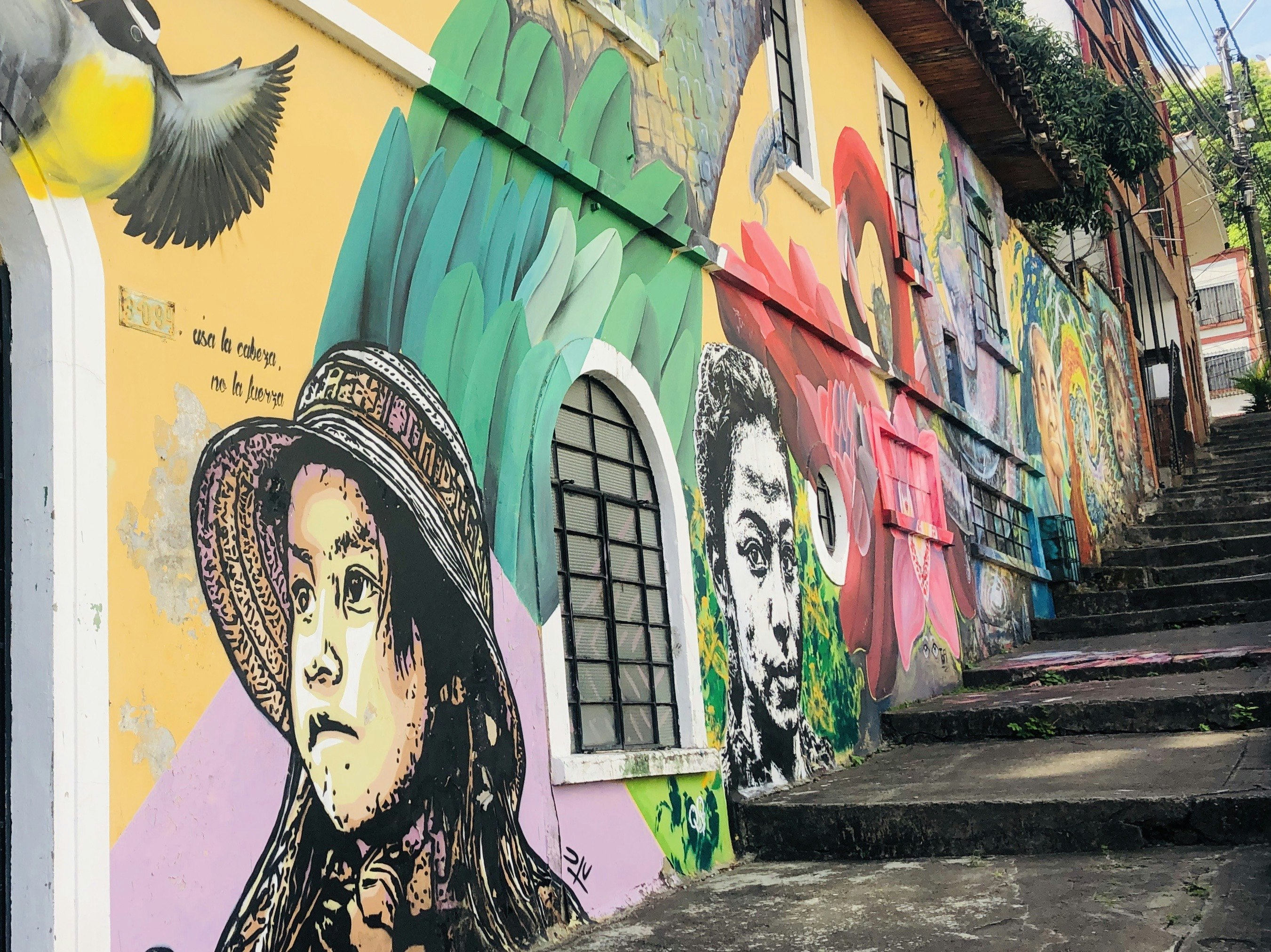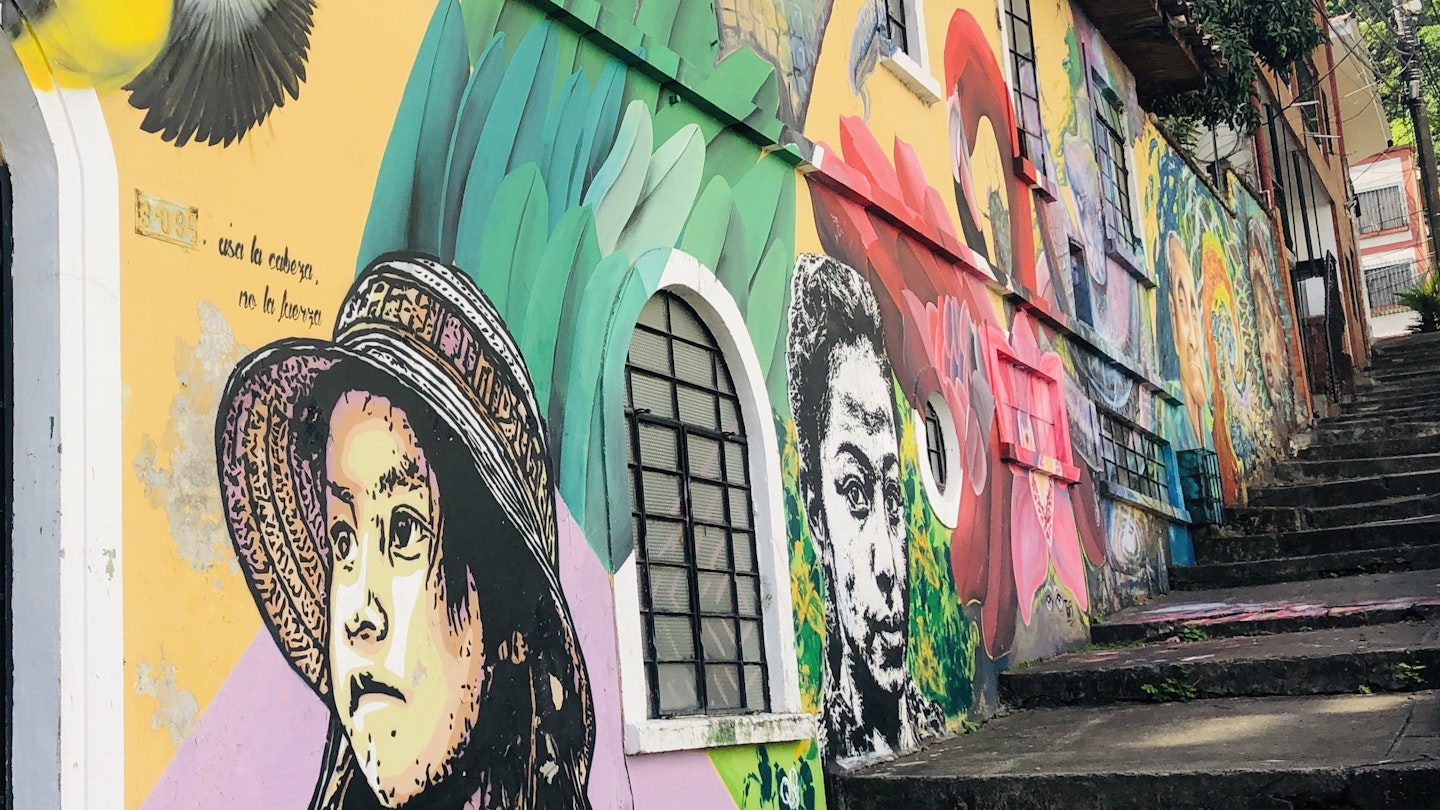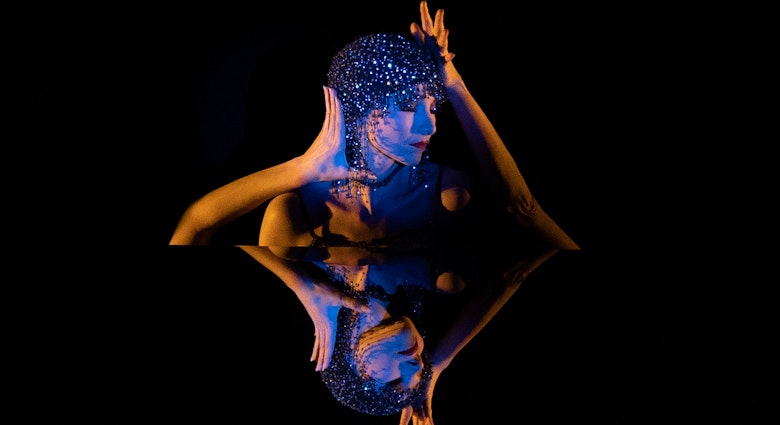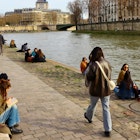Beyond its fiery dance floors, there’s so much more terrain to discover in the ‘Salsa Capital of the World’. Similar to its major city counterparts of Bogotá and Medellín, Cali has officially emerged as a friendly and dynamic must-stop on any Colombian itinerary.
For a modern Cali adventure, you don’t need to resort to hailing countless taxis to take it all in either. Whether by foot, bike, scooter or cable car, it’s time to experience Cali like never before.

Trek through San Antonio and El Peñon
The Cerro de las Tres Cruces and Cristo Rey statues loom over the city from nearby mountain peaks. While hikes to these iconic spots are quite popular, a trudge through Cali’s San Antonio and adjacent El Peñon neighborhoods can prove to be a solid workout in itself.
In addition to the salsa-joint and bar-clad Barrio Granada (located just northeast), San Antonio and El Peñon are the principal Cali neighborhoods colored by trendy shops, modern cafes and boutique hotels. Zig-zag through this part of town and you’ll inevitably absorb heaps of graffiti art and incredibly steep hills, too.
Among the neighborhoods’ finds, La Linterna is tucked away on Carrera 5 behind a can’t-miss façade of vibrant posters. La Linterna is the oldest lithograph establishment in town – when big-time bands, entertainers, athletes and more hit Cali, the business creates the eye-catching, one-of-a-kind posters that folks inevitably see plastered everywhere. Inside, you can see its decades-old, massive printing machines hailing from New York, Paris and Germany and take home a unique keepsake of your own.
Each urban hike should culminate with a trip to the neighborhoods’ highest peak and prized historic gem, Iglesia de San Antonio, which is surrounded by a small park that’s primed for panoramic vistas. Post-walk, hit nearby La Boheme, a tapas bar carved out on a hillside, with yummy craft beer selections. When you’re hungry, Parador San Antonio (Carrera 6, #1-27), just down the hill from La Boheme, has the best empanadas and ají (a homemade Colombian hot sauce) in the entire city.
Related article
Where to eat, sleep and explore in Bogotá
Scoot along the Río Cali
Scooters are popping up everywhere and Cali is certainly no exception. The principal scooter apps in the town, Lime and Grin, ask that you stick to the sidewalks for your urban ride. However, with non-existent sidewalks in many spots, missing grate covers galore and wildly inconsistent surfaces, it’s nearly impossible to find a totally stable route for riding in Cali.
A stretch along the Río Cali is your best bet, boasting an expansive pedestrian walkway and, in some spots, a bike lane that you’re encouraged to join. Start your scoot at the iconic El Gato del Río, a towering bronze statue by Colombian artist Hernando Tejada, that you’ll surely see reproduced throughout town on souvenir goods. The principal statue is accompanied by a linear park (Parque El Gato De Tejada) of themed, decorated cat statues crafted by various artists.
From there, head to the south side of the river (where you’ll be greeted by more Insta-worthy cat statues) for your scoot east to the Iglesia La Ermita. Churches on the Iglesia La Ermita grounds date back to the early 17th century, including a building that was completely destroyed by a 1787 earthquake. Today, a neo-gothic white and grey structure stands with centuries old relics housed inside, marking a sharp contrast to Cali’s predominantly brick and tan skyline.
Once you’ve parked your scooter, walk over to Cali’s main square, Plaza de Caicedo, and enjoy some local delicacies from hustling street vendors. Must-haves include fresh sugarcane juice and champú, a drink typically comprised of the lulo fruit, pineapple and corn.

Hop on a cable car through Siloé
With a quick search of Siloé online, the hillside neighborhood is widely considered a place you should avoid. Painted with seemingly makeshift brick houses, tin roofs and the occasional mural, this barrio remains an epicenter of Cali crime. But, firmly strung above the neighborhood and connecting areas, is a new, safe transportation system that is breathing hope and life into the entire city.
In late 2015, the Mío Cable system opened connecting four total stations – Cañaveralejo, Tierra Blanca, Lleras Camargo and Brisas de Mayo. The entire mountainous route is approximately 1.2 miles (two kilometers) and lasts 45 minutes roundtrip max. Similar to Medellín’s Metrocable system, which has helped positively transform some of its historically poor neighborhoods, the Mío Cable in Cali is providing locals with unprecedented access to the broader city, jobs and resources.
Related article
How to spend a perfect weekend in Cartagena
For Cali visitors, the Mío Cable provides incredible views and powerful perspective. Take a cab to the Cañaveralejo station, purchase a ticket and make sure to stop at each station. The cable car route is considered a ruta turística (tourist route) and its welcoming staff will let you seamlessly hop on and off to explore the stations. Each station is themed, too - spanning transportation, music, nature and myths and legends – so you can take in an exhibit and learn something about Cali’s culture with each break.

Bike (or stroll) along the Ciclovida route
You probably don’t want to walk down the middle of a Cali street, let alone a highway, on a normal day. But, each Sunday from 8am to 1pm, it’s a totally sanctioned and acceptable activity that upwards of 25,000 people participate in weekly.
As part of the Ciclovida de Cali, a north to south route of principal city roads is shut down for bicyclists, walkers and pets. The primary route starts in the north on Autopista Simón Bolivar near Camposanto Metropolitano del Norte and stems south to Calle 16 in the El Ingenio neighborhood. There are numerous smaller, community Ciclovida routes throughout the city as well. One of the plusses of the Ciclovida routes is that you can join or exit at any time and bike, walk or stroll at your own pace. For bike rentals, Cali Bike Tours has hourly options.
In early 2019, the city launched a nighttime version of the Ciclovida (Ciclovida Nocturna), taking place each Thursday from 8 to 10pm. It’s one more way the city is encouraging folks to explore the growingly vast beauty that is Cali.












